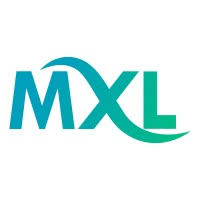
Robinjasper1109
Uploaded on Aug 29, 2025
In today's fast-paced business environment, employee training is no longer a static event. It must be a continuous, dynamic process that keeps pace with market changes, technological advancements, and evolving skill requirements. The old model of lengthy, one-size-fits-all training is failing to meet the needs of a modern workforce that demands agility, personalization, and relevance. To truly elevate employee training from a passive function to a strategic business driver, organizations must build a comprehensive microlearning strategy that is both intelligent and scalable. A well-designed microlearning strategy is more than just a collection of short videos. It is a targeted, data-driven framework that embeds learning directly into the flow of work. For industries as diverse as Finance, Healthcare, and Oil and Gas, a smart strategy is the key to ensuring employees are not just competent, but continuously developing the skills needed for future success. Step 1: Align Your Strategy with Business Goals The first and most critical step is to move beyond learning metrics and align your microlearning strategy with tangible business outcomes. What specific problem are you trying to solve? Is it a high turnover rate, a compliance risk, or a new product launch? Your strategy should be a direct answer to a business need. For a bank in the Banking sector, a microlearning strategy might be designed to reduce transaction errors by 20%. For a company in the Insurance industry, the goal could be to improve a claims team's efficiency by a measurable percentage. By starting with a clear, business-focused goal, you ensure your training has a purpose and can demonstrate a clear return on investment. Step 2: Curate and Create the Right Content Once your goals are defined, the next step is to develop content that is not only short but also highly effective. This requires a two-pronged approach: leveraging a library of existing content and creating your own. A high-performing microlearning strategy is built on a foundation of quality content, which is where the right microlearning tools are essential. Content Creation: A powerful and user-friendly Microlearning Authoring Tool is a must-have. It empowers subject matter experts (SMEs) to transform their knowledge into engaging, bite-sized Microlearning Courses. The most forward-thinking organizations are now leveraging an AI-powered Authoring Tool that can analyze lengthy documents, presentations, or videos and automatically generate a series of interactive quizzes, summaries, and infographics. This allows a company in the Pharma industry to rapidly create training on a new drug and push it out to their sales team instantly, eliminating the long development cycle of traditional methods. Step 3: Select the Optimal Delivery System Content is useless without an intelligent delivery system. A robust Microlearning Platform is the central hub for your strategy, but to truly elevate your training, you need a platform that is built for today's mobile, on-demand world. The best Microlearning Platforms come with a dedicated Microlearning Application that puts learning directly into the hands of your employees. For an employee on the sales floor in Retail, a quick video on a new product feature is available on their work device at the point of need. Similarly, a field technician in Oil and Gas can access a short, procedural checklist on a tablet, which can be critical for safety and efficiency. To take delivery to the next level, you need an AI-Powered Learning Platform. This intelligent system uses data to analyze an employee's role, performance, and learning history to provide personalized recommendations. It ensures that every microlearning course or piece of information is perfectly tailored to the individual learner, saving them time and maximizing impact. This level of personalization is a cornerstone of an elevated training strategy. Step 4: Measure Impact and Iterate for Success The final, and perhaps most important, step is to prove your strategy is working. A sophisticated Microlearning LMS (Learning Management System) provides the data and analytics needed to go beyond simple completion rates. For a Mining company, the LMS can track how a new series of safety modules correlates with a reduction in on-site incidents. For a Healthcare system, it can show how a series of micro-lessons on new patient protocols led to a decrease in administrative errors. This data allows you to demonstrate the business value of your training and continuously refine your strategy for even greater success. The collective power of these Microlearning Tools and Microlearning Software transforms training from a reactive expense into a proactive driver of organizational success. By following these strategic steps, organizations can build a microlearning program that truly elevates employee training, creating a workforce that is not only knowledgeable but also agile, engaged, and ready to meet the challenges of tomorrow.

Comments